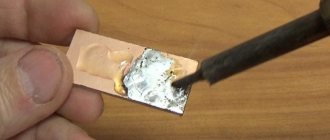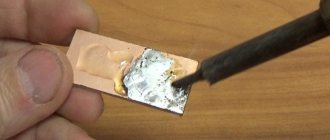how to charge a car battery . This is necessary not only to increase the battery life, but also to ensure the safety of the entire automotive electrical system. The answer to the question of how to properly charge a battery depends on several factors, including the type of battery, its capacity, the value of current and voltage for which the battery is designed, etc. You will learn about all this if you read this material to the end.
When should you charge your battery?
When studying the question of how to charge a battery, you need to pay attention to the voltage, which allows you to control the charge level.
Every car owner needs to know its optimal value. It should fluctuate between 12.6–12.9 volts. If the value is less, this indicates that the battery is discharged. However, in practice it is rarely possible to maintain a full charge all the time. Therefore, it is allowed to operate an electric battery with a voltage of 12 volts or higher. If the indicator value is less, then it is recommended to charge the car battery. This is due to the fact that using the device in this condition can lead to negative consequences. Firstly, the battery capacity is reduced. Secondly, a layer of sulfate and lead settles on the surface of the plates.
It should be noted that a voltage of 10.8 volts is considered critical. This is called “deep discharge” and has a negative effect on the battery. The main consequence of this impact is a reduction in service life. To answer the question of how to charge a car battery correctly, you need not only to correctly assess the condition of the battery, but also to correctly carry out the preparatory procedures.
How to charge a maintenance free battery
Many modern batteries are maintenance-free. This means that they cannot check the electrolyte level and the condition of the plates. In general, the process of charging maintenance-free batteries is not much different from a similar procedure with old batteries. Charging can be done with either constant current or constant voltage. The best option would be to use an electronic automatic charger for this, for example, with a charging indicator light (a green light indicating the end of charging). It will not only make the car owner’s work easier, but will also ensure the correct current and voltage values, as well as charging time.
However, if you use a mechanical charger, then calculating the charging time is important in this context. To do this, you need to calculate the degree of its discharge. A voltage value at the battery terminals of 12.7 Volts indicates a 100% battery charge. If the same value is equal to 11.7 Volts (it could be lower, but this will already be a deep discharge, which is harmful for many batteries), then it can be taken as 0%. Accordingly, for example, a voltage of 12.2 Volts will indicate a charge of 50% capacity.
The optimal charging current is 10% of the capacity. In the example repeatedly given above, this would be 6 Amps for a battery with a capacity of 60 Ah. For example, if the measured voltage at the terminals is 12.2 Volts, that is, the battery is 50% discharged, then this means that to fill its capacity we need to supply 30 Ah. Therefore, 30 Ah must be divided by the current value of 6 Amps, resulting in 5 hours. Theoretically, you can apply all 30 Amps to reduce the time to one hour. However, this should not be done as it will kill the battery. And you will have to change it sooner than you would like.
It is important to understand that overcharging is harmful for any battery. That is, for example, what will happen if you wait not 5 hours, as in the previous example, but 7 or 10? In this case, the level of capacity and charging will not change, but the process of boiling of the electrolyte will begin with its evaporation. And if it can be topped up in a serviced battery, then this cannot be done in an unserviced one; accordingly, such a situation cannot be allowed either! The boiled electrolyte will evaporate through the safety release valve when critical pressure is reached inside the battery cans. However, its body will remain intact (it will not explode, as many car enthusiasts think). But a low electrolyte level will reduce the battery capacity and reduce its overall operating life. According to the instructions, recharging is allowed for a maximum of 15...30 minutes.
Assessing the condition of the battery
When analyzing how to properly charge a battery, it should be noted that you need to start by studying information that includes information about assessing the condition of the battery. So, this can be done using three methods:
- According to the built-in indicator, which is installed on most modern batteries. It is a ball that changes colors depending on the charge. If the tint turns green, the car is operating at an optimal level. In situations where the color changes to white, it is necessary to charge the battery. There are moments when the indicator turns black. This indicates insufficient electrolyte levels.
- Using a professional electrical measuring instrument called a multimeter. It allows you to determine the degree of discharge of the battery. In other words, this device measures the voltage at the terminals, which should exceed 12 volts. Correspondence between voltage and charge magnitude
Voltage degree, V Charge level, % 10,5 0 11,58 20 11,9 40 12,2 60 12,42 80 12.6 or more 100 - Using a load coil. Practice shows that this method is the most reliable to determine whether the car battery needs to be recharged or not. Moreover, such a reel can be purchased at any store specializing in the sale of accessories for cars.
Preparing the battery for the charging process
Before charging a car battery, it is recommended to carry out preparations that include a certain sequence of actions:
- Remove the battery from the vehicle.
- Use a soda solution to clean the battery monoblock from acid residues and contaminants. To prepare this mixture you will need 1 tablespoon of baking soda per glass of water. It is used to weaken the effect of the electrolyte, which contains sulfuric acid and purified water in a percentage ratio of 40 to 60. If during the cleaning process the solution begins to hiss and foam a little, this indicates the presence of excess acid.
- Clean battery terminals. This must be done as they are constantly subject to oxidation. It is recommended to carry out such a procedure in two ways: using cutting tools or flexible abrasive material.
- Wipe the top of the battery monoblock.
- Unscrew the plugs from the battery.
- Inspect the electrolyte level. This procedure can be completed in a few minutes. If the plates are lowered into it by 0.5 centimeters, then this indicates the optimal value of the indicator. In the opposite situation, it becomes necessary to add distilled liquid.
- Make sure the battery polarity is correct and connect a special charger with the output side to the battery terminals.
- Start the charge transfer process.
- Adjust the response and metadata parameters on the device. This action is typical for non-automatic devices.
Inexperienced motorists often have a question: how often should a car battery be charged? Experts recommend doing this once a season, mainly before the onset of winter. However, sometimes additional charging may be required. To determine when to charge your car battery, you need to monitor the engine starting process very carefully. If the starter spins at a standard pace, then no action is required. In opposite situations, it is necessary to solve the low charge problem. Thus, there is no clear answer to the question of how often to charge a car battery, since it depends on a number of uncontrollable factors.
If we talk about whether it is possible to charge a cold car battery, then in winter this should be done every month. Moreover, once a week it is recommended to check the density of the substance that conducts electric current, and daily add distilled liquid before leaving.
How to properly charge a car battery
Before moving on to practical tips and recommendations, it is necessary to briefly dwell on theoretical issues. So, batteries are charged in one of two possible ways - using direct current and using constant voltage. Let's consider each of them separately.
DC charging
As the name suggests, a variable charger sets the charging current to 10% of the battery capacity (for example, a traditional 60 Ah car battery is charged at a constant current of 6 Amps). In this case, the voltage value will change during charging.
One of the disadvantages of this method is that it is necessary to periodically (about once every one or two hours) adjust the current value, which can also change. As for old maintained batteries, gas will be released from their electrolyte, and the more charged the battery is, the more intense the gas release will be. By the way, intense release of gas from the electrolyte is one of the signs of a fully charged battery.
Initially, the voltage output from the charger will be relatively low and will increase as charging progresses. At the moment when the voltage reaches 14.4 Volts, it is necessary to reduce the current by half (if it was 6 Amperes, then it must be reduced to 3 Amperes). The charging process must be carried out before intense gas evolution from the electrolyte begins. When the voltage reaches 15 Volts, the current value must be reduced by another half (to 1.5 Amperes in the example given). This must be continued until the voltage reaches a constant value and stops increasing. The second signal that the battery is fully charged will be the fact that the voltage and current values do not change for one to two hours. How long to charge can be calculated using a special calculator:
Constant voltage charging
Another charging method is to set a constant voltage on the charger. This value depends on the type of battery. When the battery is connected to the charger, the current value will be maximum (and it will be greater, the more discharged the battery is). As a rule, chargers have circuit solutions that forcefully limit the charging current to about 20...25 Amperes. This is done to preserve the functionality of both the charger and the battery. As charging proceeds, the voltage at the battery terminals approaches that supplied by the charger, and the current approaches zero. This happens according to the exponential law.
The choice of constant voltage value depends on the degree of discharge of the battery. For example, at a voltage of 14.4 Volts, the battery will be charged 75...85% in one day. At a voltage of 15 Volts - by 85...90%, and at 16 Volts - by 95...97%. To fully charge the battery in a day, you need a voltage of about 16.3...16.4 Volts. Please note that for many modern maintenance-free batteries there is an artificial voltage limit, for example, equal to 14.4 Volts. Under such conditions, it will take more than a day to fully charge the battery.
How to charge a car battery
Regardless of the type of battery, to charge it, you must use a source of constant current (constant voltage) with the ability to adjust these values. It is best to use special chargers for this, sold in car stores or markets. It is important that a charger designed for charging a battery designed for 12 Volts DC makes it possible to increase the charging voltage to 16...16.5 Volts. This is necessary in light of the fact that otherwise it will be impossible to charge a modern maintenance-free battery to its maximum capacity (100% of its capacity).
Battery (car battery)
A car battery is a vehicle's energy source that is responsible for starting the engine. The main faults are sulfation, terminal oxidation, short circuit. It is checked with a multimeter and charged with constant current or voltage. More details
First, let's consider the simplest type of battery - “antimony” (antimony is added to the plate material) and “hybrid” (antimony, calcium, and sometimes silver are added to the plate material). Accordingly, a regular charger is suitable for charging them. The charging current must be selected depending on the battery capacity, it must be 10% of its value (for example, a battery with a capacity of 60 Ah must be charged with a constant current of 6 Amps). The constant voltage value should be in the range from 13.8 to 14.5 Volts. During the charging process, the current value will drop, and this will happen according to an exponential law. This fact is also the answer to the question - how long to charge the battery. Accordingly, the duration of the loading process depends on several factors:
- battery capacity;
- the degree of its discharge;
- charger power;
- general technical condition of the battery.
The higher the charging current, the faster the battery will charge. However, in this case the probability of its discharge will also be higher. Therefore, many car enthusiasts set the current value to around 2 Amperes (approximately, depending on the capacity), and leave the battery with the charger overnight (about 6...10 hours). This approach will eliminate “overcharging,” which is very harmful to the battery, and will also provide better charging (in the future, the battery will retain its charge longer).
Please note that before the charging process, it is advisable to clean the battery terminals from plaque and rust (if any), even for preventive purposes. This will ensure better electrical contact. And after charging, it is advisable to treat the battery terminals with special means for this.
The battery charge level must be monitored regularly and the corresponding value must be checked at least once a month. Moreover, this does not depend on the time of year or the ambient temperature, although it is in the cold that problems with the battery arise much more often.
Before the charging process, it is necessary to unscrew the caps on each of the cans (for batteries being serviced), and also remove the plug in order to ensure the free release of electrolyte vapors and not to create excess pressure inside the battery. After removing the plugs, you need to check the electrolyte level in each jar. If its level is low, you need to add distilled water until it completely covers the battery plates.
Features of car battery maintenance
A set of instructions for proper maintenance of different types of car batteries. Features of servicing gel, alkaline and acid batteries Read more
It is not advisable to charge serviced batteries at home, since during the process of boiling the electrolyte, gas is released that is harmful to the human body (in high concentrations it is explosive). Accordingly, it is advisable to charge in a garage or in well-ventilated areas. As for maintenance-free batteries (the caps on the banks cannot be unscrewed), they can be charged in the apartment, since similar gas is not released under normal charging conditions.
Methods for charging a car battery
There are three main ways to properly charge a battery:
- Direct current. This technique is used to remove lead sulfate residue from the plates that has accumulated over time. This type of charge is called equalizing. This method is also suitable for emergency revitalization of the battery. We are talking about forced charging.
- Constant tension. In this method, two groups are distinguished. The first includes a charge of a modified plan, the second - a continuous recharge.
- Combined. Includes a two-step process.
Let's take a closer look at each method by which you can charge the battery.
DC charging
To provide a charge to the battery using this method, it is necessary to connect it to a source of electricity with a continuous current intensity, which is characterized by a voltage of no higher than 16.1 volts. Moreover, to calculate the intensity of charge movement in the conductor, you only need to divide the battery capacity by the number of hours during which the car battery was charged. For example, the current strength when charging for 20 hours is determined by the following formula:
I=Average/20, where
I – current strength; Cp – actual battery capacity.
If we consider the features that explain how to properly charge a 60 ampere hour car battery, the battery of which is completely drained, then there is a rule: 6 amperes for 10 hours.
The advantage of this method is that the battery can be fully charged. Moreover, the lower the current strength, the deeper it will be. But this does not mean that you need to go too far. After all, if you use a very low current, this will make the charging time quite long.
Disadvantages of this method:
- the need for periodic regulation of current strength;
- significant gas emissions due to overcharging;
- increase in electrolyte temperature.
To reduce the effect of negative consequences, it is recommended to use a two-stage mode:
- first stage – apply a charging current of 1/10 of the actual capacity;
- the second stage is to reduce the charge by 2 times when the voltage of one bank reaches 14.4 volts.
Constant voltage charging
Using this method, you can ensure the battery is charged within 90–95%.
Advantages of this method:
- instantly bringing the battery to operational mode;
- a significant portion of the electricity is used to renew the plates.
Disadvantages of this method: a significant increase in the temperature of the electrolyte due to the high current that occurs at the initial stage of charging.
It may take several days to fully charge the battery. The density of the electrolyte is the main determinant of the charge of the battery.
Combined charging
Many drivers, when choosing how best to charge a car battery, prefer a combined method, which includes two stages. At the first stage, a current strength corresponding to 1/10 of the actual capacity is used. The charge should reach 14.4–14.8 volts. Next, you need to switch to charging using constant voltage. This method allows you to get rid of a number of disadvantages, as it has the following positive properties:
- Provides optimal charging speed.
- Eliminates excess voltage, which can cause decomposition of a complex substance under the influence of water and dangerous gas release.
How to charge an AGM battery
New batteries made using AGM technology are confused by many car enthusiasts with gel batteries (denoted as GEL). In fact, these are two different types of batteries. One of the advantages of such batteries is high starting currents (up to 500...900 Amperes), which allows you to start any engine in cold weather without any problems. Another advantage of an AGM battery is faster charging (about three times faster). And it charges perfectly from a car generator. And its service life is 3...5 years longer than that of a conventional acid battery.
As for charging AGM batteries, there are three options. In particular:
- Charge, accumulation, storage . The charging process can be carried out directly on the car or using a charger. In this case, the voltage value will be in the range of 14.2...14.8 Volts (but not more than 15.2 Volts, you need to further clarify in the instructions), the current strength will be 10...30% of the capacitance value. Energy is accumulated after deep discharge. The voltage is similar - 14.2...14.8 Volts, and the current is 10% of the capacity (no more!). In storage mode (for example, long-term storage in a warehouse or garage), the charging voltage should be within 13.2...13.8 Volts, and the current value should be 5...10% of the capacity value.
- Charging and storage . This is the most common option and is recommended by most manufacturers. For charging, the voltage is 14.2...14.8 Volts, and the current is 10...30% of the capacity. For storage, the voltage will be 13.2…13.8 Volts.
- Loading . Some manufacturers do not indicate the storage mode, but only provide information about charging conditions. They are identical to those given above - the voltage is 14.2...14.8 Volts, and the current is 10...30% of the battery capacity.
A few words about chargers. As with gel batteries, current and voltage levels must be closely monitored. Therefore, it is advisable to purchase an electronic charging unit in advance, preferably with two modes. This will not only minimize the participation of the car owner in the charging process, but will also ensure safe and efficient charging. If you decide to buy a mechanical charger, you will need to manually carefully monitor and adjust the current and voltage values.
How do you know when the process is over?
To properly charge a car battery, it is recommended to use a current that does not exceed 1/10 of the battery capacity. This value can be found on the candy bar. It is expressed as A/hour.
If you charge the battery using automatic devices, the end of the process will appear on the display. It is equipped with digital indicator lights that show what stage of charging it is at. Green color indicates that the battery is ready for use.
Some chargers include an ammeter. At the moment when its needle approaches zero, it will be possible to disconnect the battery from the device. Thus, charge your car battery correctly to the required limit!
Selecting a factory charger
Choosing a charger for lead-acid electric batteries is an important and responsible task, since the functioning of the entire car depends on this device. First of all, it is recommended to pay attention to the possibility of stabilizing the current strength.
The best choice is automatic charging of the car battery. On the one hand, it guarantees the best relationship between the movement of electric charge in the conductor and voltage. On the other hand, it cyclically charges the car battery. When the required compliance is achieved, the device will stop transferring charge.
Please note that such devices are protected from risk situations:
- poor compliance with polarity conditions;
- connecting two points of an electrical circuit with different potential values;
- excess current load.
A number of models of this premium format have auxiliary characteristics:
- mode for removing sulfuric acid salts from battery plates;
- additional training system;
- function of establishing the battery size;
- presence of an indication screen.
Available means
When studying the question of how to charge a battery, it can be noted that it is not necessary to use a special charger. It's easy to make it yourself. However, this poses a certain danger if you do not have an understanding of the basics of such a process. Moreover, not all drivers know how to charge a car battery using various available means. There are several ways to make such devices with your own hands:
- Use a standard household outlet for charging, the voltage of which is 220 volts. To do this, it is recommended to use an electronic device made of semiconductor material and technical devices capable of converting energy.
- Take a secondary power source. For example, a power supply from a laptop or computer. Such a device is capable of providing a voltage of 13–14 volts and a current of more than 1 ampere.
It should be remembered that it is necessary to constantly monitor how the car battery is charged. Proper regulation is carried out not only on the basis of periodic measurements at the battery terminals, but also on the calculation of the time interval.
Charging car batteries using improvised means requires great care, as they provoke increased heating of the battery. This in turn leads to a significant release of chemical elements such as oxygen and hydrogen. Improper use of devices can lead to dangerous situations such as damage, flames, and burns.
Preparatory work
Wear suitable protective equipment
Safety is of the utmost importance whenever you service or operate your vehicle. Start by wearing safety glasses to protect you from sparks or battery fluid. It is also recommended to use gloves. Make sure that the room in which work is performed is well ventilated and sufficiently lit.
Gloves are not required. But they can protect you from minor pinches and cuts while working on your car.
Make sure there are no children nearby while you are charging your car's battery, as a spark may occur if the positive and negative cables accidentally touch each other.
Determine what kind of battery you have
To properly charge your battery, you must first determine the type of battery you have. You can usually find a description somewhere on the battery. Sometimes you may need to visit the manufacturer's website if the label is too worn to read the information on it.
You should also check the battery voltage on the label or in your vehicle's owner's manual.
Buy a car charger
Choose a charger that is suitable for your battery. Most chargers are universal and suitable for all types of batteries except gel ones. There are fast chargers that can charge your battery quickly and even give you a jump start. There are also inkjet chargers that charge slowly, but at a higher quality.
Many modern devices have a microprocessor installed that allows you to control the degree of battery charge. This is very convenient as the process stops automatically after the battery is fully charged.
Simpler and older models must be stopped manually to prevent dangerous overcharging. You should not leave them unattended for a long time in the connected state.
- Read your charger's instruction manual to ensure you are using it correctly.
- Even modern digital models must be carefully monitored during charging to ensure they are functioning properly and stopping before recharging the battery.
Disconnect and remove the battery
It is important to disconnect the battery before recharging it. Often circumstances allow you to charge the battery without removing it from the car. But many car enthusiasts still take the device out of the engine compartment and take it home or to a room where there is an electrical outlet.
Attention! Always disconnect the negative terminal first and then the positive terminal.
Clean the terminals
Any dirt on the battery terminals can prevent the charging cables from making a strong connection to the battery cells, so it is important to clean them thoroughly. Use baking soda and a damp cloth or sandpaper to remove any dirt or rust. Make sure the metal terminals are completely clean before moving on to the next step.
- Sometimes you may find that the battery is fully charged, but dirty terminals are simply preventing electricity from flowing through.
- Do not handle the terminals with bare hands, especially if there is white powder visible on them. This may be sulfuric acid, which can burn your skin if it comes into contact with it.
Tricks for recharging your battery on the go
If the battery runs out on the road, the question naturally arises: how to charge it? To avoid being immobilized at the most inopportune moment, you need to worry about purchasing a special device for battery resuscitation in advance. We are talking about a wire that is designed to start a vehicle. In addition, charging the battery through the cigarette lighter is the most effective way. However, situations arise when a problem with the battery takes you by surprise while on the road, and you don’t have the necessary equipment with you. How to properly charge a car battery in the absence of special devices? There are two tricks that will help revive a dead battery.
If you own a car with a manual transmission, you can try to jump start it. Recharging a car battery using this method is carried out according to the following sequence of actions:
- Turn the ignition by turning the key to the starter.
- Helpers must push the car until it reaches a speed of 10–25 km/h.
- Engage 3rd gear and release the clutch.
Performing this order of manipulations should start the engine. This is due to the fact that the process starts the generator, which acts as a charger for the battery. At the same time, for drivers traveling alone, the relevant question is: is it possible to recharge a car battery without using physical force? A regular tow rope is suitable as a replacement. The following problem arises: is it possible for owners of an automatic transmission to charge the battery using this method? Answer: no, this method is only suitable for cars with manual transmission.
How to quickly charge a car battery on the road in the absence of a cable and fellow travelers? There is one trick that allows you to revive the battery in a few minutes: turn on the high beam headlights for 5-15 seconds. This will lead to the activation of chemical reactions, through which the necessary charge for ignition is accumulated.
Popular questions and answers
We asked an expert, Nikolai Baranov, General Director of the Detaili club car service center, to answer the most common questions about charging a car battery.
Is it possible to charge the battery without removing it from the car?
You can not remove the battery from the car, but you must remove the terminals for proper charging. Because in the process, voltage surges may appear, which have a detrimental effect on the car’s electronic systems.
What charges better - a generator or a charger?
Definitely a charger, the generator produces a very low current and is designed more to maintain the battery charge, and not for full charging.
Is it possible to charge a battery in the cold?
The battery can be charged in the cold if the electrolyte has not turned into ice, but it is more likely that you will not be able to charge it 100% and without constant monitoring of the voltage, current and density of the electrolyte, you can render it inoperative forever.
How long does it take to charge a car battery?
According to the expert, everything depends on the battery capacity, its condition, temperature, degree of discharge, and the characteristics of the charger are also important. Under different conditions, charging can take from two hours to two days. For example, at room temperature, a not frozen but discharged battery with no signs of internal failure with a capacity of 60A*h will charge in 10-12 hours. And in the case of a frozen battery, before charging it is necessary to defrost it and only then charge it at a minimum current. Or in the case of automatic charging in the “frozen battery” mode, thereby the charging time will increase several times. There are also cases when a completely discharged battery charges in a couple of hours; this is a bad sign and indicates a loss of battery capacity, which occurs due to sulfation of the plates. There are two main reasons: the first is the natural aging process of the battery during long-term use, and the second reason is the constant undercharging or discharge of the battery.
Does a new car battery need to be charged?
There is nothing negative in charging a new battery, but in any case it is very difficult to find a battery in a store with a 100% charge, which corresponds to a voltage of 12.7-12.9V. Usually, when buying a new battery, the seller measures the voltage with a multimeter, and the battery gives a value of about 12.50V, which means a charge of about 80%; charging is not required at this indicator, but for your peace of mind and to extend the life of the battery, you can carry out this procedure. But in the case when you see a value of 12.1V on a new battery, which is considered the minimum acceptable for starting a car, charging is simply necessary.
Safety measures - what should you never do?
Charging a car battery is a complex chemical process that can not only cause injuries and burns, but also have more serious consequences for human health. This is due to the fact that it is accompanied by the release of compounds capable of ignition. To ensure safety, the following guidelines must be followed when charging the battery:
- Charge the battery in well-ventilated areas.
- Avoid working near open flames (smoldering cigarettes, lit matches).
- First remove the battery from the car. If this is not possible, then disconnect the wires.
Thus, by charging the battery correctly, you will protect yourself from unforeseen incidents.
What to do if the car won't start
It happens that in the morning, when we get behind the wheel of a car, we discover that it won’t start. The most common cause of this is a dead battery.
The battery may die unexpectedly. There are several reasons for this:
- The battery has been in use for a long time, its resource is exhausted;
- the generator does not charge the battery;
- some consumer in the car is faulty, or its connection to the battery is incorrect;
- there is severe frost outside;
- the stove, player or headlights were left on overnight.
When you don’t have time to charge the battery because you urgently need to hit the road, you can “light up” from the battery of another car. To do this, you need to transfer the wires with clamps from the battery of a working car to yours.
After the car has started, it is advisable not to turn off the engine for an hour in order to better charge the battery. At higher speeds, the battery will recharge faster.
Then it is necessary to carry out diagnostics. You may have to fully charge the battery, repair the generator or other device in the car.











